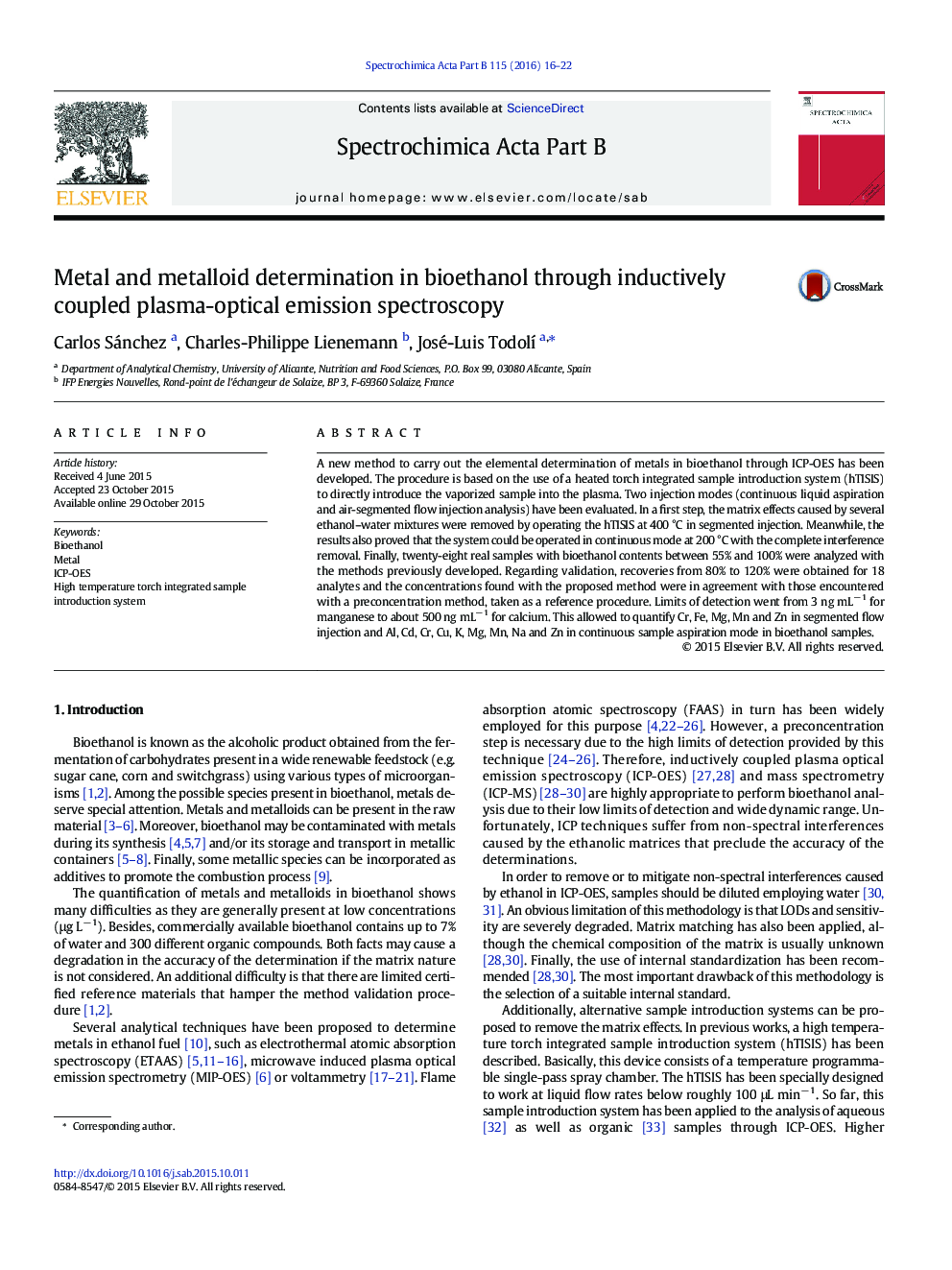| Article ID | Journal | Published Year | Pages | File Type |
|---|---|---|---|---|
| 1239712 | Spectrochimica Acta Part B: Atomic Spectroscopy | 2016 | 7 Pages |
•The aerosol heating leads to an increase in the ICP-OES sensitivity and a mitigation of the matrix effects caused by ethanol•External calibration with aqueous standards provides accurate results with the employed total sample consumption system•Sample continuous introduction is compared against segmented flow injection
A new method to carry out the elemental determination of metals in bioethanol through ICP-OES has been developed. The procedure is based on the use of a heated torch integrated sample introduction system (hTISIS) to directly introduce the vaporized sample into the plasma. Two injection modes (continuous liquid aspiration and air-segmented flow injection analysis) have been evaluated. In a first step, the matrix effects caused by several ethanol–water mixtures were removed by operating the hTISIS at 400 °C in segmented injection. Meanwhile, the results also proved that the system could be operated in continuous mode at 200 °C with the complete interference removal. Finally, twenty-eight real samples with bioethanol contents between 55% and 100% were analyzed with the methods previously developed. Regarding validation, recoveries from 80% to 120% were obtained for 18 analytes and the concentrations found with the proposed method were in agreement with those encountered with a preconcentration method, taken as a reference procedure. Limits of detection went from 3 ng mL− 1 for manganese to about 500 ng mL− 1 for calcium. This allowed to quantify Cr, Fe, Mg, Mn and Zn in segmented flow injection and Al, Cd, Cr, Cu, K, Mg, Mn, Na and Zn in continuous sample aspiration mode in bioethanol samples.
